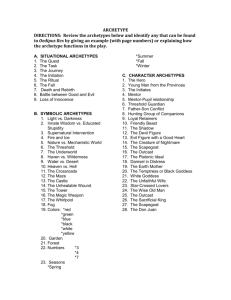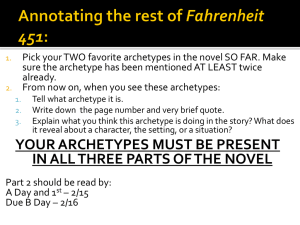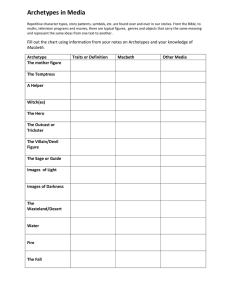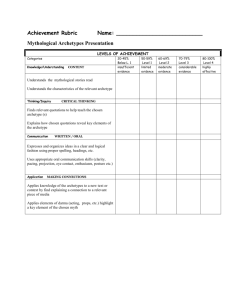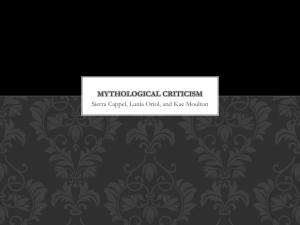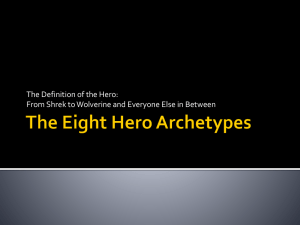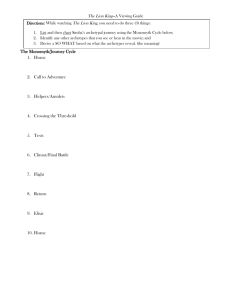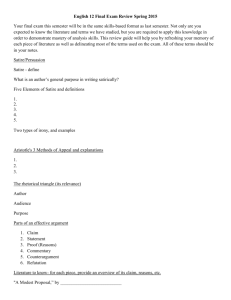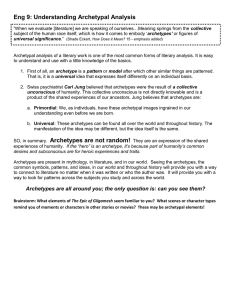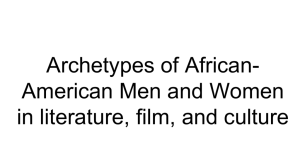archetype handout
advertisement
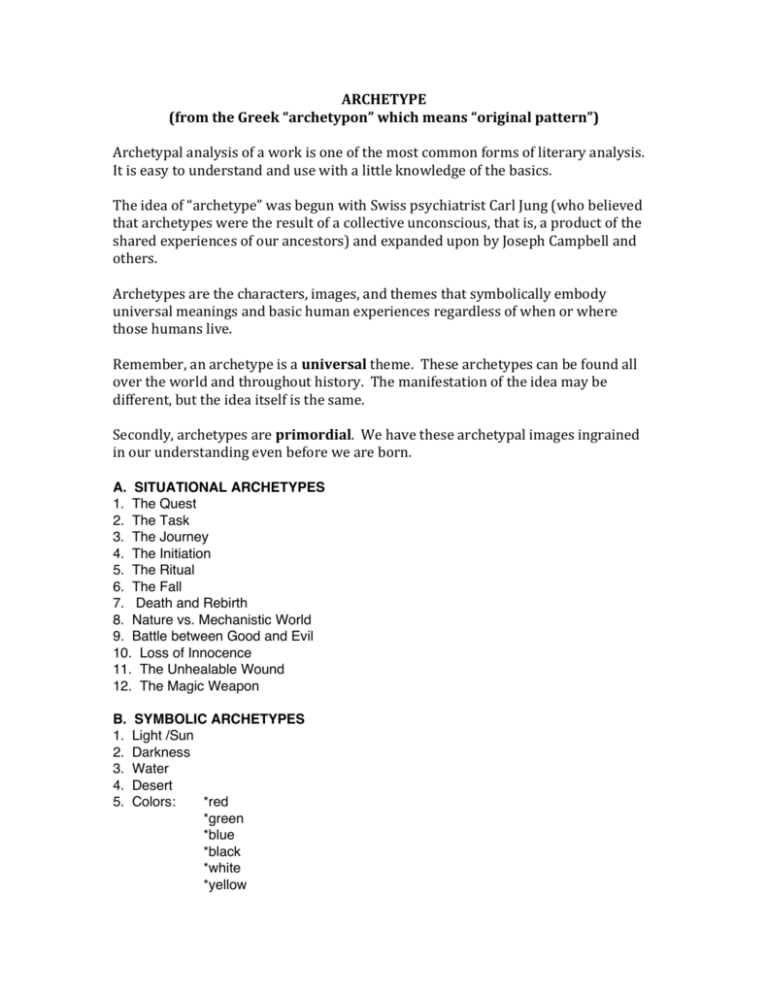
ARCHETYPE (from the Greek “archetypon” which means “original pattern”) Archetypal analysis of a work is one of the most common forms of literary analysis. It is easy to understand and use with a little knowledge of the basics. The idea of “archetype” was begun with Swiss psychiatrist Carl Jung (who believed that archetypes were the result of a collective unconscious, that is, a product of the shared experiences of our ancestors) and expanded upon by Joseph Campbell and others. Archetypes are the characters, images, and themes that symbolically embody universal meanings and basic human experiences regardless of when or where those humans live. Remember, an archetype is a universal theme. These archetypes can be found all over the world and throughout history. The manifestation of the idea may be different, but the idea itself is the same. Secondly, archetypes are primordial. We have these archetypal images ingrained in our understanding even before we are born. A. SITUATIONAL ARCHETYPES 1. The Quest 2. The Task 3. The Journey 4. The Initiation 5. The Ritual 6. The Fall 7. Death and Rebirth 8. Nature vs. Mechanistic World 9. Battle between Good and Evil 10. Loss of Innocence 11. The Unhealable Wound 12. The Magic Weapon B. 1. 2. 3. 4. 5. SYMBOLIC ARCHETYPES Light /Sun Darkness Water Desert Colors: *red *green *blue *black *white *yellow 6. Serpent 7. Tree 8. Garden 9. Forest 10. Creation 11. Numbers *3 *4 *7 12. Seasons *Spring *Summer *Fall *Winter 13. The Great Fish 14. The Lion 15. The Lamb 16. The Eagle, etc. C. CHARACTER ARCHETYPES 1. The Hero 2. The Outcast 3. The Wise Old Man 4. The Sacrificial King 5. The Scapegoat 6. The Star-Crossed Lovers 7. Don Juan 8. Young Person from the Provinces 9. The Initiates 10. Mentors 11. Father-Son Conflict 12. The Damsel in Distress 13. The Temptress 14. The Unfaithful Wife 15. The Earth Mother 16. The Shrew 17. The Devil Figure 18. The Evil Figure with (ultimately) a Good Heart 19. Friendly Beast 20. The Blind Man
